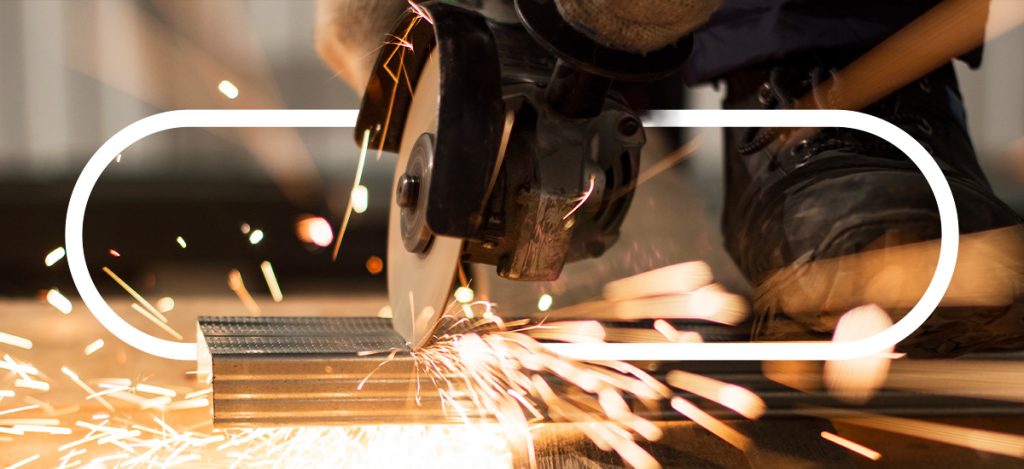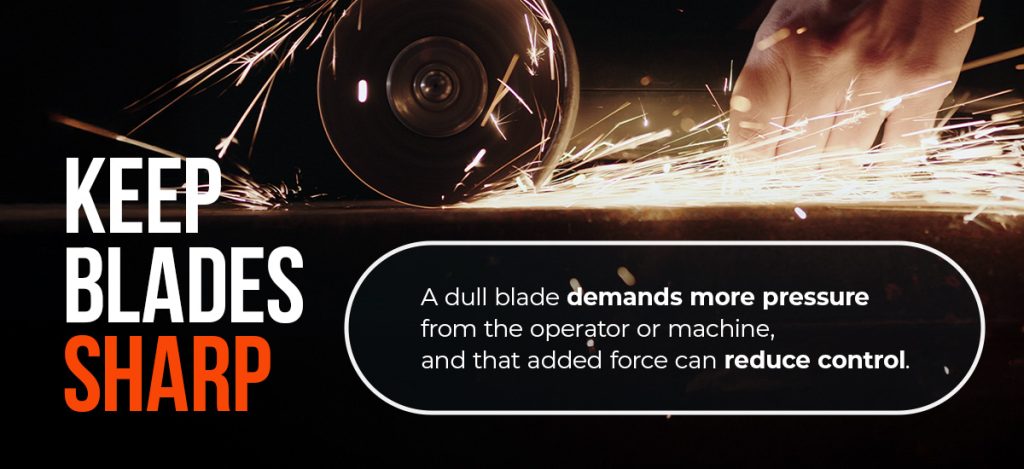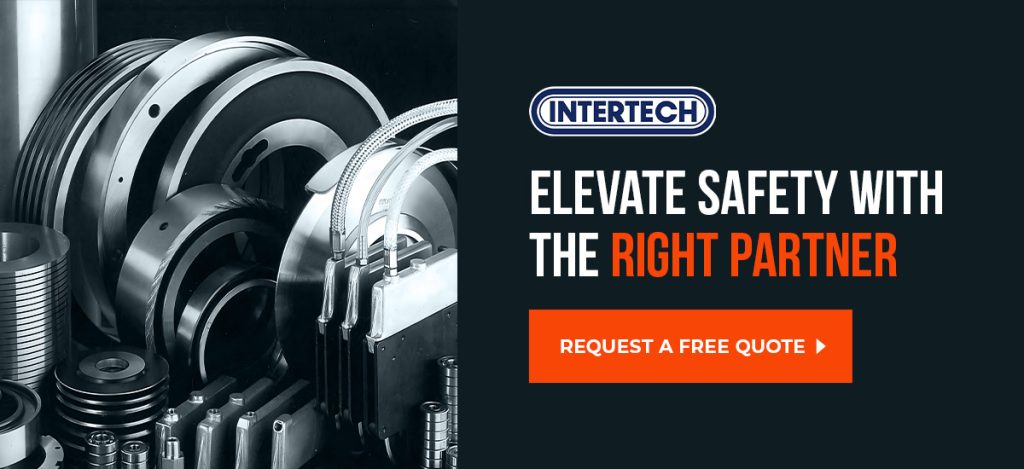
Industrial knives are important tools, but they also present significant risks. Knife-related incidents can devastate your team, halt productivity and negatively impact your bottom line.
Below, we explore practical, actionable tips for knife safety in the workplace. Whether you’re an engineer, technician or buyer managing blade safety protocols, these insights can help reduce incidents and create a safer, more efficient operation.
Why Knife Safety for Industrial Knives Matters
In fast-paced production environments, the use of industrial knives is routine, but familiarity can lead to complacency and costly mistakes. A single knife-related incident, like a deep laceration that requires stitches, can disrupt workflows and strain teams.
Even a minor mishap can result in unexpected downtime, staffing adjustments and increased pressure on surrounding teams to maintain output. Beyond the immediate physical harm, these incidents can also have a mental and emotional impact, especially when preventable.
Establishing and maintaining a strong safety culture is about protecting your people and preserving operational integrity. When proper protocols are embedded in day-to-day processes, your team can work more confidently, consistently and with less risk of interruptions.
Common Causes of Knife Injuries
Understanding what leads to injuries is the first step toward preventing them. In most cases, the causes are surprisingly avoidable. Common risks include:
- Distractions and inattention: Even brief lapses in focus, like answering a colleague or checking a message, can lead to an accident when handling industrial knives.
- Using dull or improper blades: Dull blades or using a knife unsuited for the cut material can also result in loss of control.
- Incorrect cutting techniques: Poor ergonomics or improper grip and angle can put hands and fingers directly in the blade’s path, especially when cutting irregular or pliable materials.
- Improper storage and handling: Unsecured blades, exposed cutting edges and knives stored on unstable surfaces can all increase the chance of accidental contact or damage.
7 Knife Handling Safety Tips for the Workplace
Proper industrial knife safety is about creating a work culture where focus and consistency are prioritized. Safety should be embedded in day-to-day workflows for long-term success.
1. Provide Thorough Training for All Employees
Proper knife handling safety starts with appropriate training. Every employee who works with or near knives should receive clear, role-specific safety instructions.
In addition to basic knife handling training, you’ll need to ensure that you implement the following:
- Refresher sessions: These help reinforce standards and close knowledge gaps.
- Mentoring or shadowing: This can ease new workers into high-risk tasks gradually.
- Shared accountability culture: Everyone on the team needs to understand their role in workplace safety.
Keeping safety at the top of one’s mind also means addressing distractions. For example, loud environments, multitasking or even casual conversations during cutting can lead to serious injuries. Set expectations early and reinforce them with supervisors who model safe behaviors.
2. Use the Right Knife
Using the wrong knife, even if it fits the machine, can create unpredictable cuts and lead to avoidable errors. That’s why it’s essential to match knives with the right material. You’ll also need to be mindful of blade geometry and coatings that improve clean cuts or reduce heat buildup. Partnering with a knowledgeable supplier can help prevent mismatches that can compromise quality and safety.
3. Keep Blades Sharp

A dull blade demands more pressure from the operator or machine, and that added force can reduce control.
For example, when cutting through a tough material with a dull blade, the operator may need to apply more force than usual, increasing the risk of the knife slipping and causing an injury. To keep your blades sharp, you can follow these guidelines:
- Inspect blades at shift start and during routine checks: Regular inspections allow your team to identify wear or any damage that could compromise blade performance.
- Replace blades promptly: Replacing worn or damaged blades ensures your team always uses a sharp, reliable tool.
- Keep a log of blade changes: Tracking blade changes can help you identify wear and tear patterns, allowing you to optimize your cutting processes, enhancing traceability and process improvement.
4. Always Cut Away From the Body
While some cutting operations are enclosed or automated, others may involve manual setup, adjustments or feed handling. In these scenarios, proper positioning is crucial. Follow these rules to ensure safe positioning:
- Always cut away from the body and never position hands near the cutting path.
- Use clamps, guides or holding tools when stabilizing materials.
- Keep nonessential items off cutting surfaces to prevent unintentional shifts or interferences.
5. Store, Transport and Pass Knives Safely
Storage and handling can be an overlooked safety aspect, especially during maintenance or shift changeovers. Knives should be stored in designated holders or cabinets with guards or sheaths and never carried loosely in toolboxes.
In addition, when handing off a knife, workers should always pass it handle-first, with verbal communication if needed.
6. Prioritize Personal Protective Equipment (PPE)
PPE is not the first line of defense. However, it’s an essential backup layer when working near sharp blades. Essential PPE for operations includes the following:
- Cut-resistant gloves: These are a must in manual slitting setups or when changing blades.
- Mesh gloves: They offer additional protection for high-risk positions or during machine cleaning.
- Safety glasses: These help shield against particles or spring back from fibrous or coiled materials.
7. Choose a Safety-Focused Knife Supplier
The right partner contributes to both production quality and workplace safety. You’ll need to look for the following in a knife supplier:
- Industry experience: Suppliers who understand your material types, whether you’re slitting fiberglass tape or processing adhesive film, can recommend the right knives for safety and precision.
- Material compatibility: An expert can confirm that blades are designed specifically for your application, minimizing tool failure and unsafe improvisation.
- Compliance and support: Look for suppliers who are familiar with relevant American National Standards Institute (ANSI) and International Organization for Standardization (ISO) standards. They should also offer safety documentation, installation guidance and training support.
Frequently Asked Questions About Knife Safety
Get your pressing questions about knife safety in the workplace answered.
Why Is Knife Safety Important for Automated Cutting Processes?
Even in automated systems, technicians and operators often interact with the knives during changeovers, maintenance or jams. These are high-risk moments. Without proper training and PPE, injuries can occur. Automation improves consistency, but human oversight still demands safety-first thinking.
What Makes a Good Knife Safety Policy?
A strong knife safety policy should cover training, material-specific blade selection, blade maintenance, PPE usage and storage procedures. It should also be clearly communicated, regularly reviewed and reinforced with hands-on supervision.
How Often Should Industrial Blades Be Replaced for Safety Reasons?
Blade replacement depends on the processed material, run length and blade type. However, a good rule of thumb is to inspect blades at the start of each shift and monitor them throughout production. If there’s drag, tearing or inconsistent cuts, it may be time to replace.
Elevate Safety With the Right Partner
Knife-related injuries in slitting and converting operations are avoidable. By prioritizing training, enforcing cutting safety rules, using the right PPE and working with knowledgeable suppliers, you create a workplace that values precision and safety equally.
At Intertech Precision, we understand the daily risks that engineers and production teams face. With decades of experience delivering high-quality custom industrial knife solutions, we’re proud to be a safety-conscious partner.
Request a quote today if you’re ready to elevate your cutting performance while improving workplace safety.

